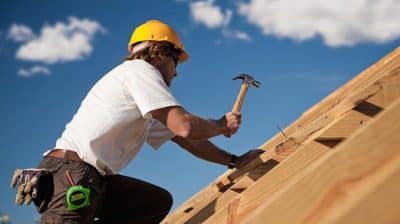
Imagine transforming that neglected shed in your backyard into a valuable asset that not only serves your needs but also increases your property’s worth. Whether you’re looking to create a cozy home office, a stylish garden retreat, or simply maximize your storage space, renovating your shed can be a game-changer. Let’s explore how to turn this often-overlooked space into a property value booster that reflects your style and meets your needs.
With the huge range of sheds colors available today, your renovation project can truly reflect your taste while complementing your home’s exterior. From classic neutrals to bold, statement-making hues, the right color choice can dramatically enhance your shed’s appeal and set the tone for its new purpose.
Assessing Your Shed’s Potential
Before diving into renovations, it’s crucial to thoroughly assess your shed’s potential by evaluating its structural integrity and current condition. Start by examining the foundation for any signs of cracks or uneven settling. Pay attention to the walls and roof, looking for any warping, rot, or leaks. These issues can compromise the entire structure and need to be addressed before any aesthetic improvements.
Next, consider the materials your shed is made of:
- Wooden sheds might require treatments for pests and moisture
- Metal sheds should be checked for rust or corrosion
- Plastic sheds need inspection for UV damage or cracking
This evaluation will help you determine if the existing materials can be salvaged or need replacement.
Don’t overlook the shed’s design and functionality. Assess the current layout and think about how it can be improved. Are there opportunities to add insulation, better ventilation, or even electrical wiring? These enhancements can significantly boost the shed’s usability.
Pro Tip: Take “before” photos and measurements. They’ll serve as a reference point and help you track your progress throughout the renovation.
Planning the Renovation
To plan your shed renovation effectively, start by creating a detailed project outline that includes timelines, budget estimates, and a list of required materials and tools.
Begin with a comprehensive inspection, identifying:
- Structural weaknesses
- Electrical needs
- Areas for potential improvement
This initial analysis forms the foundation of your timeline and budget.
Next, prioritize tasks based on their importance and complexity. Structural repairs should come first, followed by enhancements like insulation, lighting, and flooring. Use project management software or a simple spreadsheet to track progress and deadlines, ensuring you stay on schedule.
Budgeting is crucial. Allocate funds for unexpected expenses—typically 10-15% of your total budget. Research material costs and compare suppliers to get the best value for your money. High-quality materials may have a higher upfront cost but will save you money in the long run through durability and reduced maintenance.
Pro Tip: Create a mood board with design ideas, color schemes, and material samples. This visual guide will help you maintain a cohesive look throughout your renovation.
Upgrading Structural Elements
When upgrading structural elements, ensure that you reinforce any compromised support beams and replace rotting wood to maintain the integrity of your shed. Start by conducting a thorough inspection of the shed’s frame. Look for signs of decay, warping, or termite damage. Use a moisture meter to assess the wood’s condition; high moisture levels often indicate underlying issues.
For compromised beams, consider using sistering techniques. This involves attaching a new board alongside the damaged one, effectively doubling the strength and load-bearing capacity. Use galvanized or stainless-steel bolts and brackets for added durability and resistance to rust.
Rotting wood should be replaced entirely. Opt for pressure-treated lumber, which is resistant to both insects and moisture. When cutting and installing new wood, ensure precise measurements to avoid gaps that could compromise structural integrity.
Don’t forget to check the foundation. Concrete piers or footings should be level and free from cracks. If needed, reinforce the foundation with additional support posts or a new concrete slab.
Pro Tip: Apply a high-quality sealant to all wooden elements to prevent future water infiltration and extend the life of your renovated shed.
Enhancing Functionality
Once the structural integrity is secured, focus on enhancing functionality by optimizing the shed’s layout and incorporating efficient storage solutions.
Begin by assessing the space and determining your primary uses for the shed. Whether it’s a workshop, garden storage, or a creative studio, a clear purpose will guide your layout decisions.
For optimal organization, consider:
- Installing adjustable shelving units for customizable storage
- Using magnetic tool holders and pegboards for easy access to frequently used items
- Implementing modular storage systems for flexibility and reconfiguration
Lighting is another critical element. LED fixtures provide bright, energy-efficient lighting. Task lighting, such as under-shelf or workbench lights, ensures that specific areas are well-lit for detailed tasks.
Ventilation shouldn’t be overlooked. Install vents or small windows to ensure proper airflow, reducing humidity and preventing mold growth. For those aiming to use the shed year-round, consider insulating the walls and roof. This step will make the space more comfortable and extend its usability during colder months.
Pro Tip: Incorporate multi-functional furniture, like a fold-down workbench or storage ottoman, to maximize space in smaller sheds.
Increasing Property Value
Increasing your property’s value with a well-renovated shed involves strategic enhancements that appeal to potential buyers and improve overall functionality. Start by focusing on the shed’s structural integrity. Reinforce the foundation, ensure the roof is leak-proof, and replace any deteriorating materials. A solid, well-maintained structure exudes reliability and longevity, key factors in property valuation.
Next, consider adding modern utilities:
- Electricity for lighting and power tools
- Water access for gardening or cleaning
- Climate control for year-round comfort
These functional upgrades not only increase utility but also broaden buyer appeal by transforming a simple storage shed into a versatile space like a home office, workshop, or even a guest room.
Aesthetic improvements shouldn’t be overlooked. Apply a fresh coat of paint using neutral colors to appeal to a wider audience. Landscaping around the shed can enhance its visual appeal and create a cohesive look with the rest of your property.
Pro Tip: Consider adding skylights or larger windows to bring in natural light, making the space feel larger and more inviting.
A Shed Transformation Success Story
Meet Sarah, who turned her dilapidated garden shed into a charming home office. “I started by reinforcing the structure and adding insulation,” she recalls. “Then, I installed large windows for natural light and added a small HVAC unit for comfort.” Sarah’s favorite addition? A built-in desk with ample storage and a cozy reading nook. “Now, it’s not just a shed—it’s where I run my successful freelance business,” she beams.
Conclusion: Your Value-Boosting Shed Awaits
Renovating your shed is more than just a home improvement project; it’s an investment in your property’s future. By assessing its potential, planning meticulously, upgrading structural elements, enhancing functionality, and focusing on value-adding features, you’ve created a versatile space that serves your needs and appeals to potential buyers.
Remember, the key to a successful shed renovation lies in the details—from choosing the right paint color to installing efficient storage solutions. Each decision contributes to creating a more valuable and versatile space that enhances your property’s overall appeal.
Did you know that a well-renovated shed can enhance property value by up to 5%? That’s a significant return on investment for a space that’s often overlooked. Whether you’ve created a cozy retreat, a functional workspace, or simply an organized storage area, your renovated shed now adds tangible value to your home.
With these tips in mind, your shed will not only serve you well for years to come but also stand as a testament to your property’s potential. The transformation from a neglected outbuilding to a valuable asset is complete, and the benefits are yours to enjoy.
With the potential to boost your property value by up to 5%, which shed renovation project will you tackle first to transform your backyard and increase your home’s worth?








